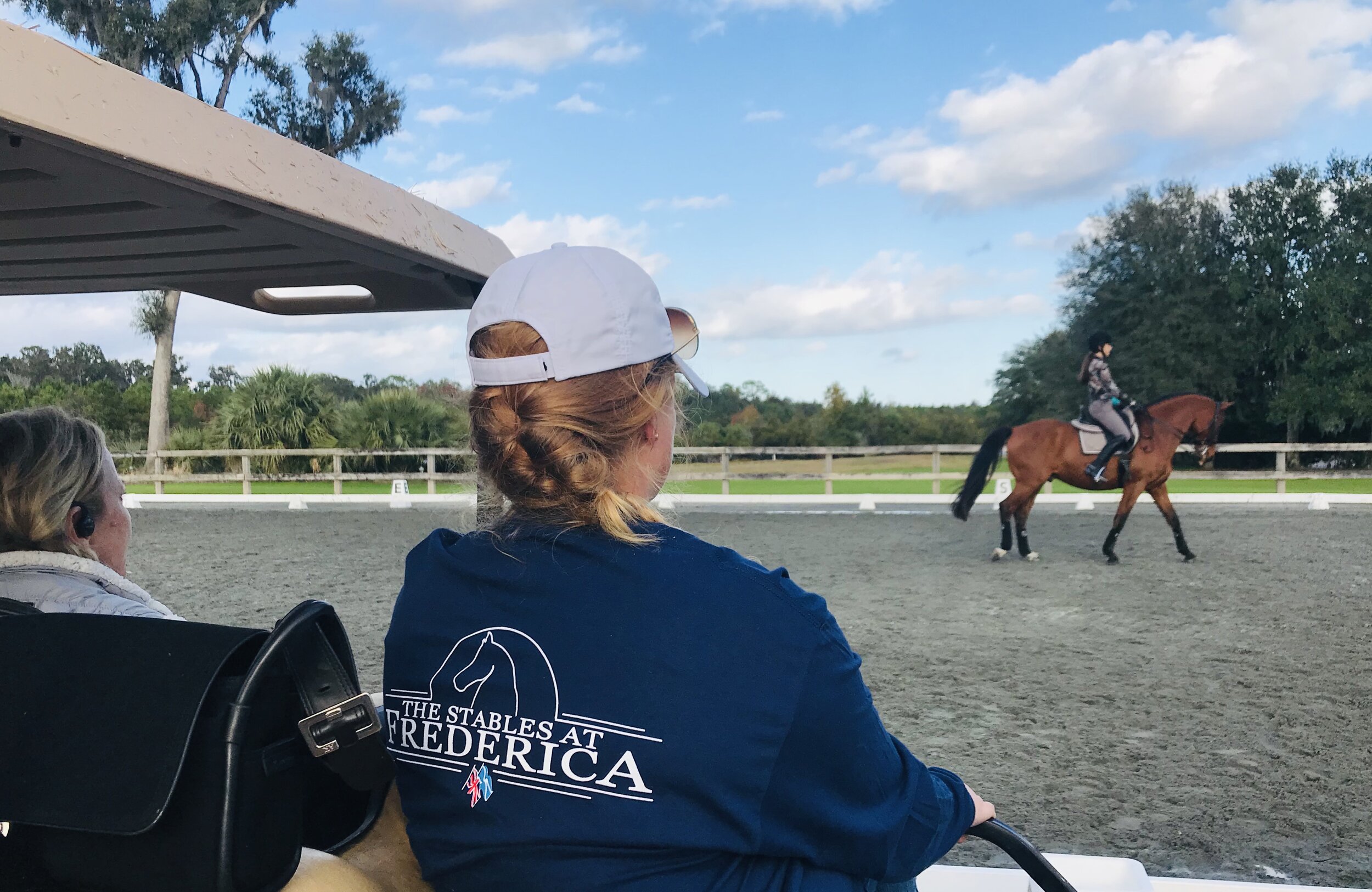A few months ago I wrote about the importance on continuing one’s education, and here we are again. In my last piece about this topic I focused on how learning keeps us as horse people inspired. After a week surrounded by top-quality horses and riders that axiom still rings true. One thing that took me several days to register was the importance of constantly exposing yourself to not only new ideas, but ideas that are slightly above your level of expertise.
I know how to teach kids correct leads and diagonals, and could explain how to learn about these topics six ways to Sunday. If I watch a lesson with a trainer teaching these skills I might pick up a trick or two, but I’m not going to learn too terribly much. A green instructor would find watching one of these lessons incredibly useful. That’s not to say that seasoned trainers no longer need to be reminded of or focus on fundamentals; any good horse person knows that the more advanced a rider and horse become the more the fundamentals come into play. If you are looking to expand your knowledge you need to expose yourself to things out of your comfort zone of familiarity.
I had two fantastic opportunities this past week to put this learning challenge to task. I had the incredible opportunity to listen to Debbie McDonald coach Adrienne Lyle aboard Salvino in preparation for the Tryon CDI4*. This lesson was in many ways lightyears above my competency, and yet so many ideas and thoughts were similar or even identical to the same ideas and themes of my own lessons. They talked about being forward after lateral movements; loosening up and control of the neck and topline, riding movements from the back to the front. I’ve heard these same instructions over and over in my lessons with Button Baker. These fundamental thoughts were applied to movements and tests beyond my capabilities and experience, which gave me the opportunity to begin to piece together how the fundamentals can be applied and helpful to movements that challenge me. Of course much of the conversation went over my head and tugged at just the edges of my understanding, but so much that applied to what I am actively working on and learning bounced around in my brain just enough to expand my understanding of forwardness, straightness, and self-carriage.
My second opportunity was to watch a rider similar to myself in level. She had a horse that rebelled when he would be blocked with a rein. What struck and excited me was that I was able to tell the difference between her hand blocking him versus softly supporting. From a distance the physical changes in the rider’s hand and arm are minuscule, and yet I was able to see when he was tensing and when he loosened. Many of the difficulties she faced were similar to my own struggles, so it was helpful to visualize how those challenges manifested from the ground perspective. I also found that having seen what the end result of a loose and supple horse is (in Salvino) I had an easier time identifying tension and tightness in a horse still moving up the levels. Lauren Sprieser wrote once about how her development of training level horses really became thorough once she had trained a horse all the way to Grand Prix. Knowing what the end destination, or final evolution, of a horse helps shape the road all the way back at the beginning of the training journey, and helps a trainer keep from getting lost along the way.
All that being said, however, opportunities like mine last week come along rarely. I don’t often have the chance to go to a show without clients so that I can focus entirely on my own learning. My students don’t often have that chance. But thanks to the internet there are a million streaming services now that offer recorded clinics, lessons, etc. And for the students at home there are always more advanced riders taking lessons. Come watch those lessons, sit on the sidelines, and take in the ideas. Free of charge ;-)

